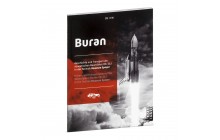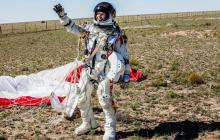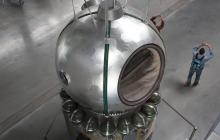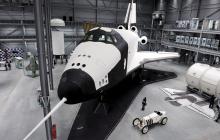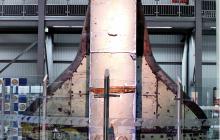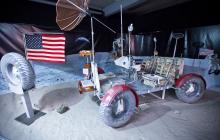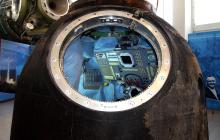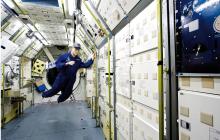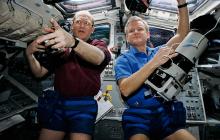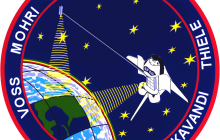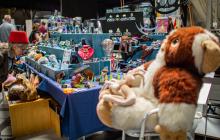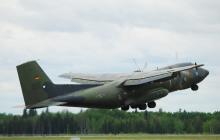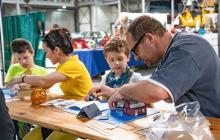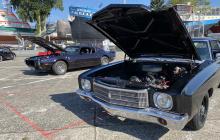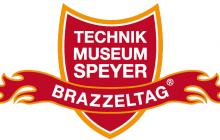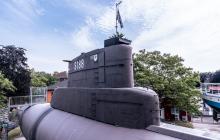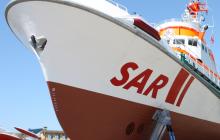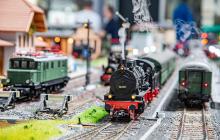ISS Module SWESDA
Swesda (Russian for star) is the Russian residential and navigation module of the International Space Station ISS, which was first inhabited by humans. The module started on 12th of July 2000 at the head of a Proton-K rocket from the Baikonur cosmodrome to the ISS. After a few train corrections, Swesda docked on the 26th of July 2000 to the module Sarja, which had already been in the earth orbit since November 1998, and is still in use today.
From spring 2017, the Technik Museum Speyer will present a true-to-the-original replica of the Swesda module in Europe's largest space exhibition "Apollo and Beyond". This is a gift from the European Space Agency. Through the good contacts to ESA, the Swesda module now found its way to Speyer. The construction work on the module and the new infotables is expected to continue until the middle of March 2017. After completion of the construction, the visitors, thanks to the generous window front, will have a unique view into the interior of the living and working area and can get an impression like cosmonauts and Astronauts live on the ISS. In addition to the Columbus module, the second 1:1 model, which belongs to the ISS International Space Station, is already to be seen at the Technik Museum Speyer.
Details about the original Swesda Module
Zvezda (Russian for Star) is the Russian residential and navigation module of the International Space Station ISS, built by RKK Energiya. Zvezda is about 13.1 meters long, has a maximum diameter of 4.15 meters, a mass of just 19.1 tons and is a modified version of the basic module of the Russian Mir Space Station. Zvezda consists of three parts: the spherical head section with docking adapters, the cylindrical main area with living and navigation area and also a cylindrical tail section. The latter can be hermetically closed, can be used as airlock for extravehicular activity or as docking port for spacecrafts and offers also some storage space. For docking maneuvers the module has four docking ports: three passive with the Pirs, Poisk, and Zarya modules, as well as a passive docking port at the rear where Soyuz, Progress and ATV could dock.
All docking ports can pump air, oxygen, water and fuel in the station and waste water from the station. Two engines are located at the rear of Zvezda for orbit changes of the ISS. 36 attitude control engines, which can change the orientation and stabalize the station in orbit are located on the module. Zvezda has two 3.3 meters wide and 29.7 meters long solar panels with an average electrical power of about five kilowatts. In addition, Zvezda has 9 windows, which allow the views in almost all directions. In the middle section there are controls, life support systems, on-board toilet and the kitchen, a treadmill, a cycle Ergometer, a table and two sleep bunks. In the kitchen there is a water dispenser for cold and hot water, which is added to the vacuum-dried and -packed food, a stove to heat up canned food and a refrigerator.
Zvezda launched atop a Proton-K rocket on July 12, 2000 from the Baikonur Cosmodrome to the already existing PMA-2, Unity, PMA-1 and Zarya on the ISS. After some course corrections Zvezda docked on July 26, 2000 to the since November 1998 in Earth orbit operating Zarya module, which assumed the active role in the final stage of docking. In the next few days, the onboard computers of Zvezda slowly took over the tasks that previously ran the on-board computers in Zarya as the control, position and power balance. One after the other the docking- and airlock module Pirs in 2001 as well as the identical Poisk module in 2009 were docked on Zvezda. Later Pirs should be undocked and burn up in the atmosphere, to make room for the new module Nauka.

